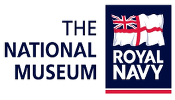Background
by Don Kindell, Sydney, Ohio, USA

In
the past, a reader would have to read dozens of
books to get even a small amount of data on the
early operations of the Royal Navy. This volume
is a compilation of thousands of sources,
official and unofficial, published and
unpublished. These include, to name just
a few: Navy Lists, Pink Lists, Red Lists,
Admiralty Officer and Rating Death Ledgers, War
Diaries, including the Admiralty War diary, as
well ships logs and reports of proceedings
etc, of the Home Fleet, Rosyth, Destroyers,
Submarines, Northern Patrol, South Atlantic,
Indian Ocean, Far East.
It
is not that every activity, every ship is
included. However, a thorough outline of early
war activities is presented and will give the
reader an idea of just how sweeping and
continuous the Royal Navy's activities were. It
will also give the serious student a base and
hopefully clues for further research.
Some
errors will exist. After extensive research,
gaps and discrepancies persist despite
considerable lengths to resolve them. The years
past and destruction or loss of a great many
official records and logs make some points
impossible to resolve.
The
real credit goes to the late Commander W. Edward
May, R.N. (retired), Janice Kay, Mary Z. Pain,
Allen Cooper, the late Commander Charles M.
Stuart, R.N. (retired), CDR Arnold Hague, RNR
(retired), and Ken Thomas who gave me
innumerable hours at the Public Record Office in
Richmond, the late John Burgess and Ken
MacPherson for their work on the Canadian Navy
and their help and friendship, J. David Brown,
Christopher Page, Arnold Hague, Kate Tildersley,
Jenny Wraight, and Robert M. Coppock who gave
assistance beyond numeration, George Ransome of
Old Traffod with his splendid collection of
scrapbooks and papers, Pat Best of the Flesh
Public Library of Piqua, Ohio, where it all
started, and countless others who I hope will
not be offended by my not naming them
specifically; their assistance invaluable but
space prohibits inclusion of them all.
This
is the first of two volumes of work (and eventual
book), the culmination of a project begun in the
1970s and covering some 4000 pages of text. It
started because of my interest in the Royal Navy
and its operations in the Second World War. I was
always dismayed to find so many sources would
mention an operation and a movement describing the
forces as “cruisers and destroyers” or “three
destroyers.” It was always important to me to find
which ships were specifically involved.
In
this research work, you will find a very
continuous flow of operations, many times giving
ships’ day to day activity. My love was always the
destroyers and I have tried to include everything
of note, and frequently not of note, that involved
them. Of course, the main thrust you will find is
the Home Fleet and the Mediterranean Fleet, but
every theatre is covered to the extent it could be
researched.
The
Fleet lists for August 1939, September 1939 and 10
June 1940 give Commanding Officers of the
respective commands and ships, organizations, and
locations of the ships for not only British
forces, but German, Italian, and USN.
Lost
or damaged ships are given with Officers killed
named and the ratings shown as number killed or
missing. Flight crews of Fleet Air Arm aircraft
killed or missing are also named.
Looking
back, I have said that years ago I would have
given anything to have a fraction of information.
Here it is for you to study and enjoy.
